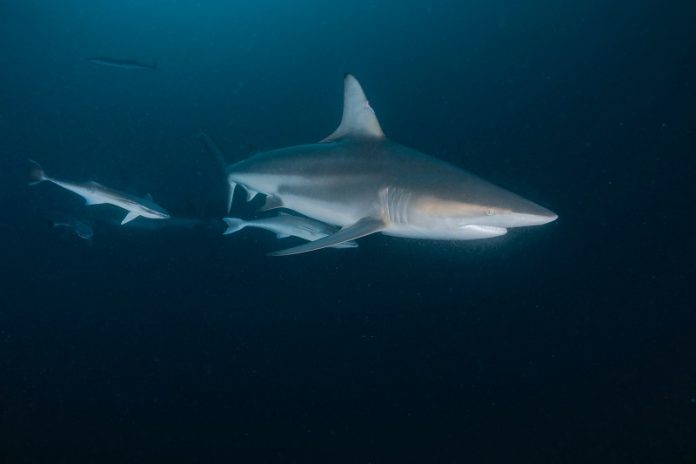
You might have seen a shark leap from the water and splash back down, but that’s just a tiny part of their life.
What we don’t see is that sharks and other big fish spend a lot of their time in the deep, dark parts of the ocean.
Scientists have been wondering, why do these sea creatures go down there?
A group of researchers has found that these big sea hunters, like sharks, tunas, and swordfish, often visit the deep ocean, a place that hasn’t been studied much but seems really important for them.
They shared their discoveries in a science journal, telling us that this deep part of the ocean, called the mesopelagic zone, is between 200 to 1,000 meters down where the sun barely reaches.
Camrin Braun, who works at the Woods Hole Oceanographic Institution, and his team used a lot of data to learn more about this mystery.
They collected information from electronic tags that they put on fish, sonar from ships that bounce sound off things in the ocean to see where they are, satellites in space, and ocean models on computers.
All this data helped them understand how deep diving affects the lives of big fish in the ocean.
The team looked at data from 344 tags over 46,659 days and learned a lot about 12 different kinds of big fish like white sharks and Yellowfin tuna. The tags showed when and how the fish dive deep down.
They also used sonar to watch the deep scattering layer (DSL), which is full of small fish and sea critters all packed together.
During the day, these animals hide in the deep ocean, but at night they swim up to the top to eat. This up-and-down movement happens every day and is known as Diel Vertical Migration.
Alice Della Penna, who’s an expert in using sound to study the ocean and helped with the study, was excited to see how the diving of the big fish matched up with the movements of the DSL.
For years, they’ve been putting together this big puzzle, and now they think these big predators dive deep to chase after the smaller prey in the DSL.
But there are still some surprises, like when a swordfish dives way deeper than expected, to 3,000 or even 6,000 feet. That’s too deep just to be looking for food, so the fish might be diving for other reasons, like staying safe from other predators or finding their way around.
Simon Thorrold, a fish scientist also part of the study, mentioned that even though sharks and tunas are very different kinds of fish, they both think it’s worth it to dive deep into the cold, dark, high-pressure world of the mesopelagic.
One exciting thing they found is that by moving up and down, these fish might be taking carbon dioxide from the top of the ocean and bringing it down deep where it can’t get back into the air for a long time. This could be a big help for our planet.
Since a lot of these deep-diving fish are caught for food, the study says it’s important not to mess up this part of the ocean that we’re just starting to understand.
The mesopelagic zone could be in danger if people fish too much or start taking resources from it without knowing how it all works.
“We’re learning that this deep ocean place is really supporting life up top,” said Della Penna. “If we’re not careful and start using it up before we really get it, we could cause harm that we can’t fix.”
The study shows we need to keep the mesopelagic safe because it’s a big deal for many sea creatures and even for us on land.
Follow us on Twitter for more articles about this topic.



